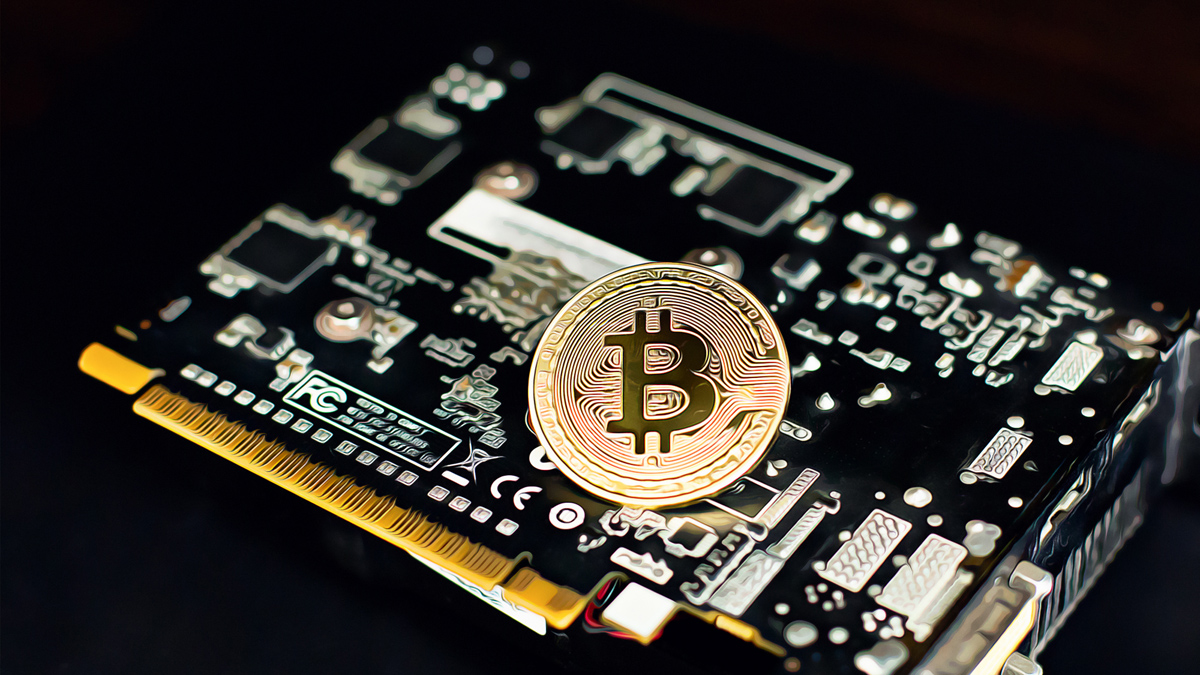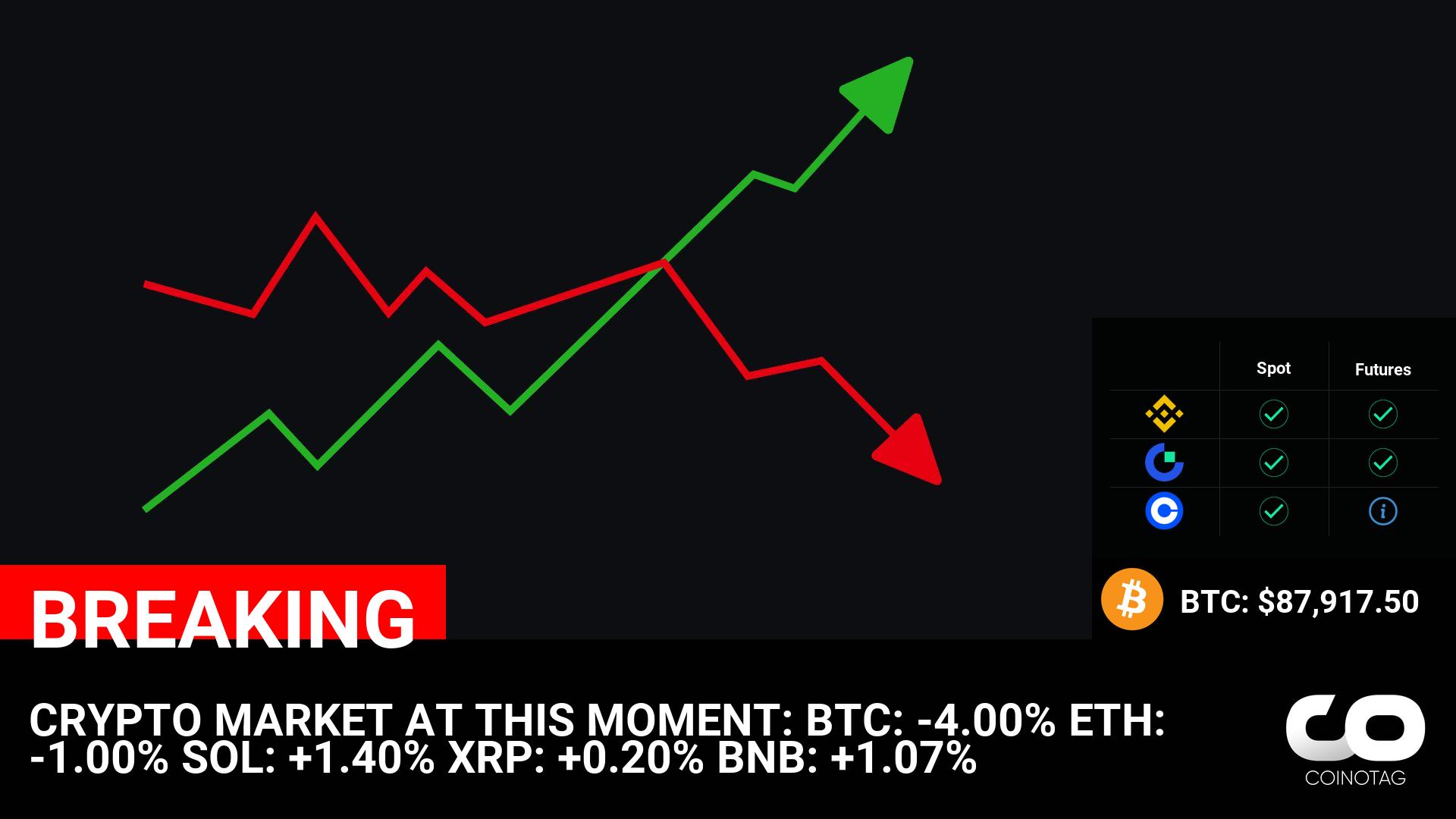
Just when Bitcoin seemed to be gaining mainstream traction, a stark reality check has emerged from the heart of European finance. Jürgen Schaaf, an influential advisor at the European Central Bank (ECB), has delivered a scathing critique of Bitcoin, dismissing the notion of Bitcoin reserves as a viable strategy for central banks. His comments, reported by Cointelegraph, paint a picture of Bitcoin as a dangerously volatile and fundamentally flawed asset, especially in the context of current market turbulence where Bitcoin has dipped below $88,000, triggering massive crypto liquidations worth $1.5 billion in just 24 hours. Is this just another dismissive voice from traditional finance, or does Schaaf’s perspective hold critical insights for anyone involved in the crypto space? Why ECB Advisor Dismisses Bitcoin Reserves as Unsuitable? Schaaf’s argument against Bitcoin reserves isn’t a casual dismissal; it’s a structured critique based on what he perceives as Bitcoin’s inherent weaknesses. He argues that unlike traditional reserve assets like oil or raw materials that underpin economic activity, Bitcoin lacks fundamental economic necessity. Let’s break down his key points: Volatility Concerns: The most prominent reason for Schaaf’s skepticism is Bitcoin’s notorious price volatility. He emphasizes that holding such a volatile asset as part of national or central bank reserves would introduce unacceptable instability. Recent market events, with Bitcoin plummeting and causing widespread crypto liquidations , only reinforce this concern. Lack of Economic Necessity: Schaaf questions Bitcoin’s fundamental utility in the real economy. He contends that Bitcoin doesn’t serve a crucial economic purpose in the same way that essential commodities do. This lack of inherent economic backing, in his view, makes it unsuitable for reserve status. Manipulation Susceptibility: The ECB advisor also points to Bitcoin’s vulnerability to market manipulation. The relatively nascent and still somewhat unregulated nature of the crypto market makes it prone to price swings influenced by large players or coordinated actions. This susceptibility further undermines its credibility as a stable reserve asset. Fuels Speculation: Schaaf believes that incorporating Bitcoin into reserves would not stabilize economies but rather exacerbate speculative activities. He fears that it would legitimize and encourage further risky investments in an asset class he considers inherently risky . In essence, Schaaf’s viewpoint is rooted in a traditional economic perspective that prioritizes stability, intrinsic value, and tangible economic utility – qualities he believes Bitcoin fundamentally lacks. The Broader Implications of Calling Bitcoin a ‘Risky Speculative Asset’ Schaaf’s description of Bitcoin as a ‘risky speculative asset’ isn’t just academic jargon; it carries significant weight, especially coming from an ECB advisor . Such pronouncements can influence regulatory discussions, institutional investment decisions, and public perception of cryptocurrencies. Here’s why this characterization matters: Regulatory Scrutiny: When influential figures like Schaaf label Bitcoin as ‘risky,’ it reinforces arguments for stricter regulation. Governments and regulatory bodies may become more inclined to impose tighter controls on the crypto market to protect consumers and financial stability. Institutional Hesitation: Large institutional investors, who are often risk-averse, might be further deterred from allocating capital to Bitcoin and other cryptocurrencies. The ‘ risky speculative asset ‘ label can solidify Bitcoin’s image as too volatile for serious institutional portfolios. Public Perception: Negative pronouncements from trusted financial authorities can sway public opinion. If the general public perceives Bitcoin primarily as a ‘ risky speculative asset ,’ adoption rates could be hindered, and skepticism towards cryptocurrencies could grow. Impact on Market Sentiment: Comments from the ECB advisor , especially during market downturns and significant crypto liquidations , can exacerbate negative market sentiment. Such statements can contribute to fear, uncertainty, and doubt (FUD), potentially leading to further sell-offs. However, it’s crucial to consider that Schaaf’s perspective represents one viewpoint within the broader financial landscape. Many proponents of Bitcoin argue that its decentralized nature, limited supply, and potential as a hedge against inflation are compelling reasons for its inclusion in reserves and portfolios. Diversified Crypto Reserves: An Even Riskier Proposition? Interestingly, Schaaf didn’t just dismiss Bitcoin; he also rejected the idea of central banks holding diversified crypto reserves. He argued that diversifying across multiple digital assets would only amplify risk and volatility rather than mitigate it. Is he right? Let’s consider this: Argument Supporting Schaaf’s View Counterarguments Increased Complexity: Managing a portfolio of various cryptocurrencies adds significant complexity in terms of security, custody, and understanding the nuances of each asset. Diversification, even within a volatile asset class, can still reduce overall portfolio risk compared to holding just one volatile asset. Correlation Risks: Many cryptocurrencies exhibit high correlation, especially during market downturns. Diversification might not provide the intended risk reduction if all assets move in the same direction. While correlations exist, they are not perfect. Different cryptocurrencies have different use cases and market dynamics, potentially offering some level of diversification benefit. Regulatory Uncertainty: The regulatory landscape for cryptocurrencies is still evolving and varies significantly across jurisdictions. Holding a diversified crypto portfolio increases exposure to regulatory risks across multiple assets and regions. Active management and careful selection of cryptocurrencies with clearer regulatory paths can mitigate some of these risks. Schaaf’s stance reflects a conservative approach, prioritizing simplicity and minimizing perceived risks. However, proponents of crypto diversification argue that strategic allocation across different types of digital assets – such as those focused on smart contracts, privacy, or decentralized finance (DeFi) – could potentially offer a more balanced risk-reward profile over the long term. Navigating the Volatile Crypto Market: Actionable Insights Whether you agree with the ECB advisor or not, the reality of Bitcoin’s volatility and the risks associated with the crypto market are undeniable. Here are some actionable insights for navigating this landscape: Educate Yourself: Thoroughly understand the assets you are investing in. Don’t rely solely on hype or headlines. Learn about the technology, use cases, and risks associated with each cryptocurrency. Manage Risk: Only invest what you can afford to lose. Given the volatility, treat crypto investments as high-risk and allocate your portfolio accordingly. Diversify (Cautiously): If you choose to invest in crypto, consider diversification, but do so strategically. Don’t just buy every coin; focus on projects with solid fundamentals and long-term potential. Stay Informed: Keep up-to-date with market news, regulatory developments, and technological advancements in the crypto space. Information is your best tool for navigating volatility. Consider Long-Term Perspective: Crypto markets are prone to short-term fluctuations. If you believe in the long-term potential of blockchain technology and cryptocurrencies, focus on long-term investment horizons rather than trying to time the market. Conclusion: A Contrarian Viewpoint or a Sobering Reality Check? Jürgen Schaaf’s critique of Bitcoin reserves serves as a powerful reminder of the skepticism that still surrounds cryptocurrencies within traditional financial institutions. His warnings about volatility, lack of economic necessity, and the risky nature of Bitcoin cannot be ignored, especially in light of recent market events and significant crypto liquidations . While proponents champion Bitcoin’s disruptive potential and long-term value proposition, voices like Schaaf’s urge caution and highlight the inherent uncertainties. Ultimately, the debate around Bitcoin’s role in the global financial system is far from settled, and understanding both sides of the argument is crucial for making informed decisions in this rapidly evolving landscape. To learn more about the latest crypto market trends, explore our article on key developments shaping Bitcoin price action.
Bitcoin World
You can visit the page to read the article.
Source: Bitcoin World
Disclaimer: The opinion expressed here is not investment advice – it is provided for informational purposes only. It does not necessarily reflect the opinion of BitMaden. Every investment and all trading involves risk, so you should always perform your own research prior to making decisions. We do not recommend investing money you cannot afford to lose.
Urgent Action: Durbin’s Bold Bill to Combat Crypto ATM Scams and Protect Users

The world of cryptocurrency, while brimming with innovation and opportunity, also presents its share of challenges, particularly in safeguarding users from illicit activities. A growing area of concern is the rise of fraud associated with cryptocurrency ATMs. Senator Dick Durbin is stepping into the fray with a new legislative proposal aimed at clamping down on these scams and bolstering consumer protection within the digital asset space. Let’s dive into the details of the Crypto ATM Fraud Prevention Act and understand what it means for the future of crypto ATMs and user safety. Why is Crypto ATM Fraud a Growing Concern? Cryptocurrency ATMs, designed to offer a convenient bridge between the traditional financial world and the digital currency realm, have unfortunately become a hotspot for fraudulent activities. These machines, allowing users to buy and sometimes sell cryptocurrencies using cash or debit cards, are increasingly being exploited by scammers. Reports from the Federal Trade Commission (FTC) and blockchain analytics firm TRM Labs highlight a disturbing trend: a surge in illicit transactions and scams routed through these ATMs. Consider these points illustrating the escalating problem of crypto ATM fraud : Accessibility & Anonymity: Crypto ATMs often require less stringent KYC (Know Your Customer) verification compared to online exchanges, making them attractive for those seeking anonymity and potentially facilitating illicit activities. Scam Vulnerability: New users, less familiar with the intricacies of cryptocurrency, are particularly vulnerable to sophisticated scams orchestrated near or through these ATMs. Scammers often prey on this lack of understanding, guiding victims to use crypto ATMs for fraudulent transactions. Lack of Regulation: The relatively nascent regulatory framework surrounding crypto ATMs has created loopholes that bad actors exploit. This bill aims to address some of these regulatory gaps. The urgency of the situation is underscored by the increasing number of reported incidents, prompting lawmakers like Senator Durbin to take decisive action. What Does the Durbin Crypto Bill Propose to Tackle Crypto ATM Scams? Senator Durbin’s Crypto ATM Fraud Prevention Act is a multi-pronged approach designed to directly confront the rising tide of crypto ATM scams . The bill introduces several key measures aimed at protecting consumers and enhancing oversight of crypto ATM operations. Here’s a breakdown of the core components of the proposed legislation: Provision Description Benefit Daily Transaction Limits for New Users Imposes a $2,000 daily transaction limit for new users of crypto ATMs. Reduces the potential damage from scams targeting new users who might be persuaded to make large initial transactions. Mandatory Fraud Warnings Requires clear and conspicuous fraud warnings to be displayed at crypto ATMs. Educates users about common crypto scams and encourages caution before transacting. Full Refunds for Scams Mandates full refunds for scam victims who report incidents within 30 days of the fraudulent transaction. Provides a safety net for victims and incentivizes reporting of scams. Anti-Fraud Program Requirement Obliges crypto ATM operators to establish and implement comprehensive anti-fraud programs. Ensures operators take proactive steps to prevent and detect fraudulent activities. Chief Compliance Officer (CCO) Requires operators to appoint a dedicated Chief Compliance Officer to oversee the anti-fraud program. Assigns responsibility and accountability within the operator’s organization for compliance and fraud prevention. Reporting to FinCEN Mandates operators to report their anti-fraud policies and compliance efforts to the Financial Crimes Enforcement Network (FinCEN). Enhances regulatory oversight and allows FinCEN to monitor and assess industry-wide fraud prevention measures. These provisions, working in concert, aim to create a more secure environment for crypto ATM users and deter fraudulent activities. What are the Potential Benefits of Stronger Cryptocurrency Regulation on ATMs? The Crypto ATM Fraud Prevention Act, if enacted, could bring about several positive changes to the cryptocurrency regulation landscape, specifically concerning ATMs. These benefits extend to both individual users and the broader crypto ecosystem. Enhanced Consumer Protection: The most immediate benefit is stronger protection for consumers, particularly those new to crypto. Transaction limits, fraud warnings, and refund policies act as vital safeguards. Reduced Scam Incidence: By making it harder for scammers to exploit crypto ATMs, the bill aims to decrease the overall incidence of crypto ATM scams and related financial losses for individuals. Increased Trust in Crypto ATMs: Improved security measures can foster greater trust and confidence in crypto ATMs as legitimate access points to the digital asset market. This could encourage wider adoption and usage, particularly among less tech-savvy individuals. Legitimization of the Crypto Industry: Proactive measures to combat fraud contribute to the overall legitimization of the cryptocurrency industry. Demonstrating a commitment to user safety and regulatory compliance is crucial for mainstream acceptance. Level Playing Field for Operators: Requiring all operators to adhere to anti-fraud standards creates a more level playing field and prevents unscrupulous operators from gaining an unfair advantage by neglecting security measures. By addressing the vulnerabilities of crypto ATMs, this bill could pave the way for a more secure and trustworthy environment for digital asset transactions. Challenges and Considerations for the Durbin Crypto Bill While the Crypto ATM Fraud Prevention Act is a commendable step towards addressing digital asset security concerns, its implementation and effectiveness may face certain challenges and require careful consideration. Some potential challenges include: Impact on Legitimate Users: Transaction limits, while aimed at preventing fraud, might inconvenience legitimate users who require larger transactions for valid purposes. Striking a balance between security and user accessibility is crucial. Enforcement Complexity: Monitoring and enforcing compliance across a potentially vast network of crypto ATM operators could be complex and resource-intensive for regulatory bodies like FinCEN. Evolving Scam Tactics: Scammers are known for their adaptability. As regulations tighten in one area, they may shift tactics or find new loopholes to exploit. Continuous monitoring and adaptive regulatory responses are essential. Technological Implementation: Implementing fraud warnings and refund mechanisms effectively across diverse ATM platforms and software systems might present technical challenges for operators. Industry Pushback: Crypto ATM operators might resist certain provisions of the bill, citing concerns about compliance costs or potential impacts on their business models. Open dialogue and collaboration between regulators and industry stakeholders are important. Addressing these challenges proactively will be vital to ensuring the bill’s success in effectively mitigating crypto ATM fraud without unduly hindering legitimate use and innovation in the crypto space. Actionable Insights: What Does This Mean for Crypto Users and the Industry? For crypto users, the proposed legislation is a positive development signaling increased attention to consumer protection within the digital asset ecosystem. Here are some actionable insights: Stay Informed: Be aware of the rising risks of crypto ATM scams and educate yourself about common scam tactics. Exercise Caution: Approach crypto ATMs with caution, especially if you are a new user. Be wary of unsolicited advice or pressure to make quick transactions. Report Suspicious Activity: If you suspect you’ve been targeted by a scam or encountered fraudulent activity at a crypto ATM, report it to the operator and relevant authorities immediately. Support Responsible Regulation: Advocate for sensible regulations that protect users without stifling innovation in the crypto industry. For the crypto ATM industry, the bill underscores the need for proactive measures to enhance security and compliance. Operators should: Implement Robust Anti-Fraud Programs: Go beyond minimum requirements and develop comprehensive anti-fraud programs that are continuously updated to address evolving threats. Prioritize User Education: Invest in user education initiatives to help customers understand the risks and use crypto ATMs safely. Engage with Regulators: Maintain open communication and collaboration with regulatory bodies like FinCEN to ensure compliance and contribute to the development of effective regulatory frameworks. Conclusion: A Necessary Step Towards a Safer Crypto Future Senator Durbin’s Crypto ATM Fraud Prevention Act represents a significant and welcome step towards addressing the growing problem of fraud in the cryptocurrency ATM space. By introducing transaction limits, mandatory warnings, and operator accountability, the bill aims to create a safer and more trustworthy environment for users. While challenges to implementation and enforcement exist, the overarching goal of protecting consumers and fostering responsible growth in the digital asset industry is undeniably crucial. This legislation underscores the increasing recognition among policymakers of the need for thoughtful and effective cryptocurrency regulation to unlock the full potential of digital assets while mitigating their inherent risks. It’s a move that could instill greater confidence in the crypto market and pave the way for wider adoption as users feel more secure in their transactions. To learn more about the latest cryptocurrency regulation trends, explore our article on key developments shaping cryptocurrency compliance and security. Bitcoin World

Sensational Bitcoin Price Prediction: Bernstein Forecasts Explosive $200K Target in 12 Months!
Hold onto your hats, crypto enthusiasts! Wall Street heavyweight Bernstein has dropped a bombshell Bitcoin price prediction that’s sending shockwaves through the market. Buckle up, because they’re forecasting Bitcoin to hit a staggering $200,000 within just 12 months! Is this just hype, or is there solid reasoning behind this audacious claim? Let’s dive deep into Bernstein’s analysis and explore what this could mean for your crypto portfolio. Why is Bernstein so Bullish on Bitcoin? Unpacking the $200K Price Target Bernstein, a well-respected research and brokerage firm, isn’t known for making outlandish claims. So, when they predict a monumental surge in Bitcoin price , it’s worth paying attention. Their recent note to The Block provides some key insights into their bullish outlook: Cycle Dynamics: Bernstein believes Bitcoin hasn’t yet peaked in its current market cycle. Past cycles have shown Bitcoin reaching new highs after significant periods of growth and consolidation. They suggest we’re still in the upward trajectory. Institutional Adoption: While not explicitly stated in the short content, firms like Bernstein often consider increasing institutional investment as a major driver for Bitcoin’s price. Large players entering the market can inject significant capital and boost demand. (This is implied context, which is good to elaborate on) Halving Effect: Historically, Bitcoin halvings (events that reduce the reward for mining new Bitcoin) have been followed by significant price increases. The reduced supply, coupled with consistent or increasing demand, can create upward price pressure. (Again, implied but relevant context) In essence, Bernstein is painting a picture of a perfect storm for Bitcoin: a market cycle with room to run, potential increased institutional interest, and the fundamental supply dynamics driven by halvings. This combination, they argue, could propel Bitcoin to unprecedented heights. Is $80,000 a ‘Steal’? Bernstein’s Crypto Investment Strategy Here’s where it gets even more interesting for potential crypto investment . Bernstein suggests that if market sentiment takes a turn for the worse and Bitcoin dips to $80,000, it would represent a highly attractive entry point. Let’s break down why they might view this as a golden opportunity: Discounted Price: Falling to $80,000 would be a significant correction from current levels (assuming current levels are above $80k when reading this). This ‘discount’ could entice investors who believe in Bitcoin’s long-term potential but are hesitant to buy at higher prices. Conviction in Long-Term Growth: Bernstein’s $200,000 prediction suggests they have strong conviction in Bitcoin’s future. An $80,000 entry point would significantly improve the potential return if their prediction holds true. Strategic Accumulation: Experienced investors often use market dips to accumulate assets they believe are undervalued. Bernstein’s note implies that they see an $80,000 Bitcoin as precisely that – undervalued in the context of its potential trajectory. However, it’s crucial to remember that even expert predictions are not guarantees. The cryptocurrency market is notoriously volatile, and Bitcoin bull run can be followed by sharp corrections. Always conduct your own thorough research and consider your risk tolerance before making any investment decisions. Navigating the Volatility: Key Considerations for Bitcoin Investors While Bernstein’s BTC price target of $200,000 is exhilarating, it’s vital to approach this information with a balanced perspective. The crypto market is a rollercoaster, and understanding the potential bumps along the way is just as important as focusing on the potential highs. Challenges and Risks to Consider: Challenge Description Market Volatility Bitcoin is known for its price swings. Significant corrections can occur even in bull markets. Regulatory Uncertainty Changes in regulations around the world can impact the crypto market negatively. Economic Factors Macroeconomic events, like inflation and interest rate hikes, can influence investor sentiment and risk appetite, affecting Bitcoin’s price. Competition from other Cryptocurrencies The crypto landscape is constantly evolving. New cryptocurrencies and technologies could potentially challenge Bitcoin’s dominance. Actionable Insights for Investors: Do Your Own Research (DYOR): Never rely solely on one prediction. Explore various analyses, understand the technology, and assess the market dynamics. Risk Management: Only invest what you can afford to lose. Diversify your portfolio and don’t put all your eggs in one basket (even if it’s a potentially golden Bitcoin basket!). Long-Term Perspective: Bitcoin is a long-term game. Focus on the fundamental value proposition and avoid getting caught up in short-term price fluctuations. Stay Informed: Keep up-to-date with crypto news, market trends, and regulatory developments. Knowledge is power in the crypto world. Conclusion: Is the $200K Bitcoin Dream Within Reach? Bernstein’s audacious $200,000 Bitcoin price prediction has certainly ignited excitement and hope within the crypto community. Their analysis, grounded in market cycle dynamics and potential entry points, provides a compelling narrative for significant future growth. While the path to $200K may be volatile and uncertain, the underlying factors driving Bitcoin’s adoption and value proposition remain strong. Whether or not this specific prediction materializes within 12 months, it underscores the growing recognition of Bitcoin’s potential as a transformative asset in the global financial landscape. As always, approach with informed optimism and a healthy dose of caution in the exhilarating world of cryptocurrency investing. To learn more about the latest crypto market trends, explore our article on key developments shaping Bitcoin price action. Bitcoin World











